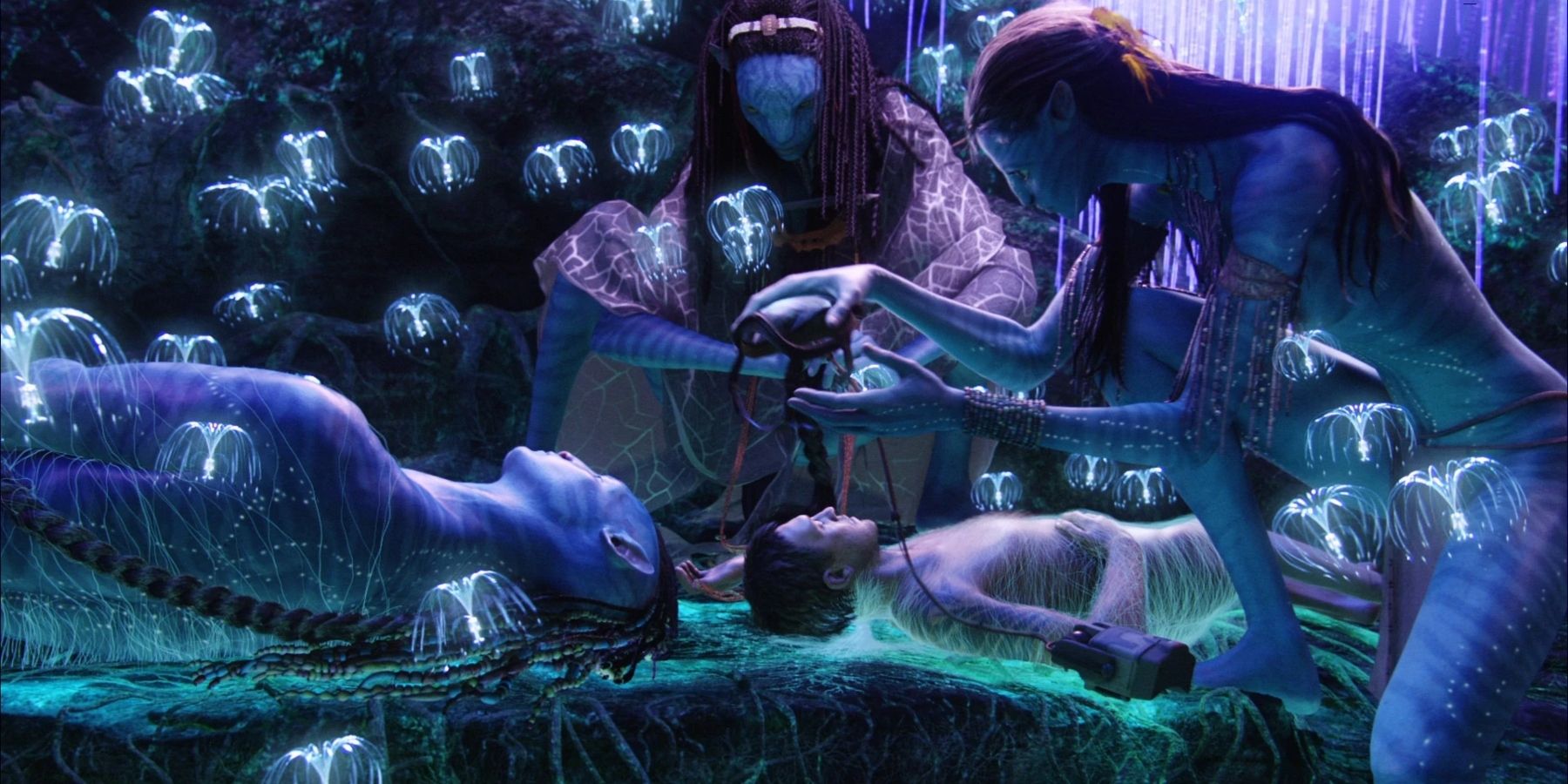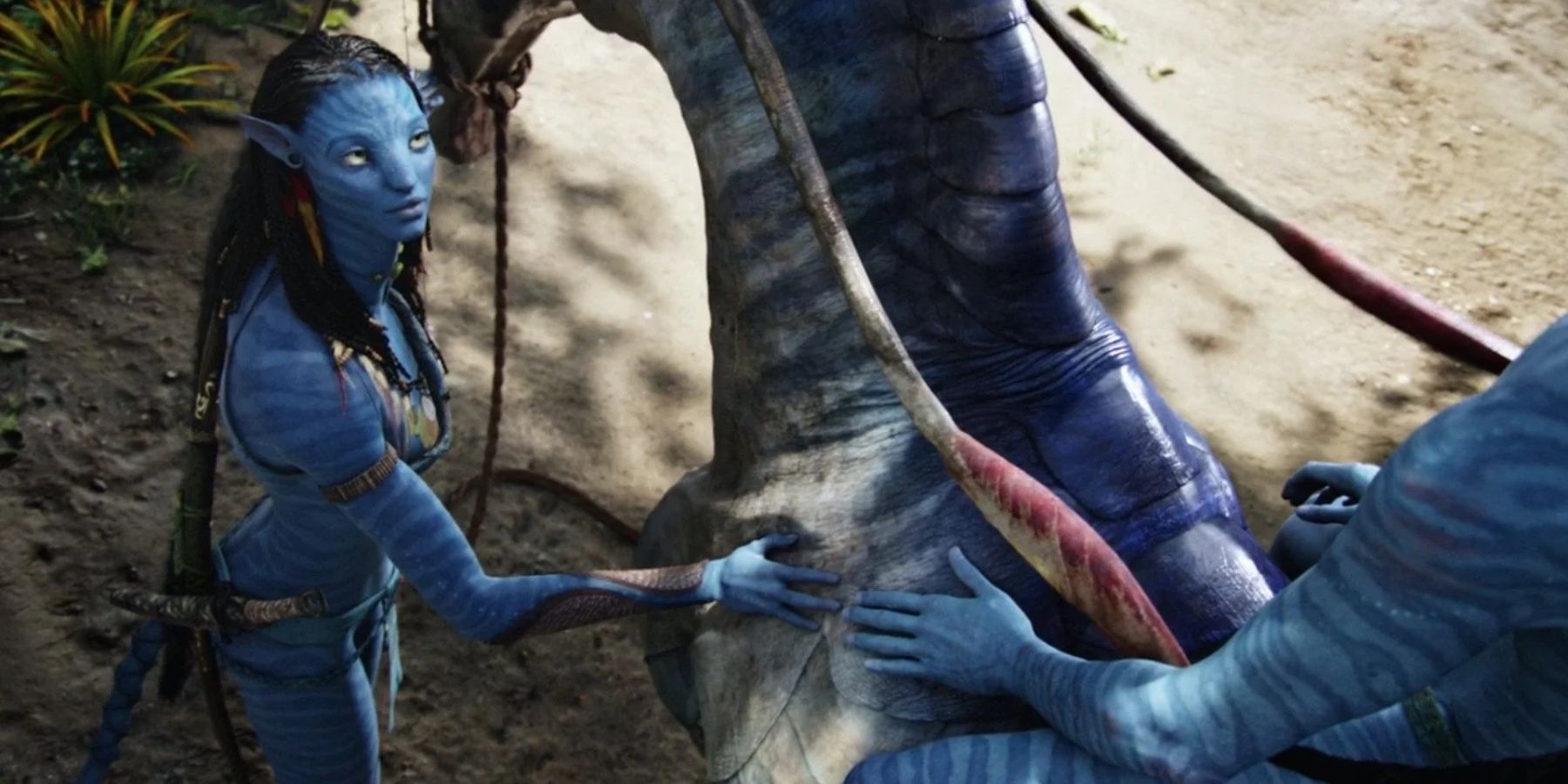Avatar: The Way of Water was one of the most successful films of 2022, even crossing the $2 billion mark at world wide Box Office. The movie, building on the world of the first Avatar film, delved even deeper into Pandora, exploring new settings away from the forest where Neytiri, Jake, and their 5 children had made their home. Not only did the second entry in the franchise explore new places, biomes, and amazing creatures on the incredible planet, but it also explored a new type of Na’vi. The film introduced a tribe called the Metkayina clan, who have adapted to live life in harmony with the oceans of their world.
One quick look at the water Na’vi and the forest Na’avi shows that there are many differences in their survival mutations, despite their fundamental biologies being the same. These include things like eye color, with the forest Na’avi having a cat-like yellow, and the ocean Na’vi having a sea-blue. There's also a difference in tails. The forest N’avi have thin, reed-like tails to help with balance, whereas the ocean Na’vi having wide, paddle-like tails to help propel them through the water. This development in the biology of the native species, which adds to the franchise's lore, made both characters in the stories, and fans watching the films, even more aware of the difference between the real Na’vi people and the human-born Avatars. So what exactly are Avatars?
How Are Human-Na’vi Avatars Made?
At the beginning of the first movie, Jake Sully is approached by the scientific branch of an organization who are conducting research on Pandora, in order to learn more about the incredible network of connection that runs beneath the ground. The Avatar Program has been designed to genetically engineer a hybrid being that looked, for all intents and purposes, like the native Na’vi, but is controlled by a human from within a safe port or space. This allowed them to safely explore an environment that is otherwise hostile to the human body, as well as integrating with and learning from the native tribes.
These Avatars are created using an embryo containing a mixture of Na’vi genes, and the human DNA of the person who will eventually sync and activate the body. It is vital that the DNA of the person chosen is of the highest quality, and is rigorous enough to undergo the splitting and developing process as the embryo grows. It is this DNA that will later allow the human to link with their Avatar’s synapses, and control the body through neural pathways and sensory connections.
The embryos are grown in an incubator that replicates the environment of a human womb, until they are fully grown, which takes around 5 years. Very few viable embryos actually make it as far as this stage, because the Na’vi DNA is difficult to fuse with human genomes. Those that do survive are then synced with their human driver once the human has made the journey from Earth to Pandora, which takes around 5 years. It’s thought that each successful Na’vi-human pairing costs over 5 billion dollars to create and grow all the way to maturity, which is why they sought out Jake. His Avatar was originally linked to his twin brother Tom, who sadly died shortly before the expedition was set to take place. Since the two were twins, Jake’s DNA could still sync with the Avatar’s body. This high cost is why the Avatars are also asked to find out about the rare substances on Pandora that will help to fund the program for years to come, like Amrita, which will be important in the story's future.
In order to pilot his Avatar, Jake had to empty his mind and enter a semi-conscious state, while the link transmitter assimilated his mind into the Avatar body. The connection is very powerful, which means that Jake is able to stay inside his Avatar for several days at a time. However, if the link is severed prematurely, it could result in catastrophic damage to the Avatar itself, as well as possible brain damage or coma-inducing shock to the pilot.
What Are The Differences Between Avatars and Real Na’vi?
There are a couple notable differences both in inner workings and in the physical appearance of the Avatars compared to the native Na’vi. The most notable distinction in terms of biology is, of course, that the Avatars are linked to a human body. This means that both the Avatar and the human have to have time when they are disconnected from each other, so that the human pilot can eat, sleep, take care of their actual body, and the Avatar can have time to heal and rest before it is next animated by its pilot.
In terms of physical differences, there are a few that are particularly important to mention. Real Na’avi only have four fingers and toes on each hand and foot, whereas the human hybrids have five, like their Earth counterparts. The real Na’vi also don’t have any hair on their body, including eyebrows. Their only hair is on their heads and at the tips of their tails. On the other hand, Avatars have hair in all the same places humans do. Finally, the Avatars have more human features, including noses, size of their eyes, and the broadness of their chests, whereas the Na’avi are slight and willowy, with large cat-like eyes and flat noses. Now, fans are waiting to see what new possible biological adaptations Avatar 3's Ash People may possess.



